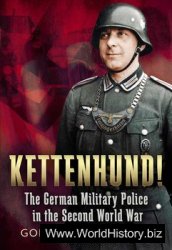Let them not sacrifice animals to devils.
(Pope Gregory in a letter to Mellitus, Abbot of Britain, AD 601)
The Celts were animists: they believed that all aspects of the natural world contained spirits, divine entities with which humans could establish a rapport: animals themselves thus possessed sanctity and symbolism. They were perceived as being at the same time similar to and very different from humans. Certain creatures were observed to have particular physical or mental qualities and characteristics, and distinctive patterns of behaviour. An animal, like a stag or horse, could be admired for its beauty, speed or virility. Dogs were seen to be keen-scented, useful in hunting, guarding and in healing themselves. Snakes are destructive, fertile and have the curious habit of sloughing their skin. Birds are keen-sighted and are able to fly, leaving behind the bonds of earth. Thus, admiration and acknowledgement of a beast's essential nature led easily to reverence of those qualities and abilities which humans either did not possess at all or possessed only partially.
Reverence of animals gave rise to a religion in which they were an integral part, playing an important role in cult and worship. The use of animals in sacrifice and other ritual has been discussed in chapter 5. Here, the sanctity of animals will be explored with reference to a complex religious iconography. Particular animals were sometimes represented as isolated images but the most striking symbolism consists of representations of animals either as companions to anthropomorphic divinities or where animals and human concepts became merged. The theme of this chapter is also closely interleaved with that of animals in pre-Roman Celtic art (chapter 6), which forms the backdrop to the religious imagery described here. This theme was only developed fully during the Romano-Celtic period, when the Celtic and Roman artistic traditions united to form a new, hybrid toreutic symbolism. The fusion of human and animal images is something which relates closely to the metamorphosis or transmogrification of human to animal and vice versa which is so vividly described in the vernacular literature of early Wales and Ireland (chapter 7).
When the Romans introduced their Mediterranean culture to the lands
Of Celtic Europe (in the mid-first century BC in most of Gaul and the midfirst century AD in Britain), they filled a number of lacunae in the indigenous tradition. One was the written expression of facts and thoughts. Another was the custom of representing the gods in human form, a comparative rarity before the Roman period. In lands such as Gaul and Britain, deities acquired names which have survived mainly through inscriptions. At the same time, images of gods and goddesses were set up in temples, public places and private homes, to honour the divinities represented and to communicate their power, by means of visual symbolism, to their human devotees.
From inscriptions and above all from iconography, it is possible for us to construct a picture of how the pagan Celts perceived their gods and the world of the supernatural, which they believed controlled all human affairs. What is of interest here is the manner in which animals were seen as a fundamental part of that other, non-human world.
The Roman and Greek deities were essentially humans writ large, suprahumans. Animals were represented with them in iconography, but were present in a clearly subordinate role. In classical religion, animals illustrated an aspect of either the god's mythology or his cult. To give an example, Mercury, the herald of the gods, is often depicted with a cockerel, which is the herald of the new day. Another emblem of Mercury is the tortoise, a motif which refers to a story in which Mercury (Hermes) invented the lyre using the shell of a tortoise. In neither instance does the animal possess any independent identity nor has it any real religious status. But in the pagan Celtic world, the iconography presents a far more complex tapestry of symbolism, in which beasts appear to play a much more prominent role. It could be argued that, because there are no written myths about the gods in this early period of Celtic history, it is impossible to judge whether or not an animal is present as a companion to a Celtic god because of its mythological role. This is a valid point, but it cannot be the whole story. In terms of the imagery itself, beasts are far more significant than in classical iconography. Whilst Mercury is identifiable with or without his zoomorphic attributes, a Celtic goddess like Epona depends upon her equine symbolism for her very identity. Moreover, the manner in which Celtic deities took on the characteristics - such as horns, antlers, hooves - of animals is something quite outside the Mediterranean tradition (with the exception of Pan) and must reflect something rather more fundamental in the perception of the position of the animal in relation to the god.




 World History
World History









